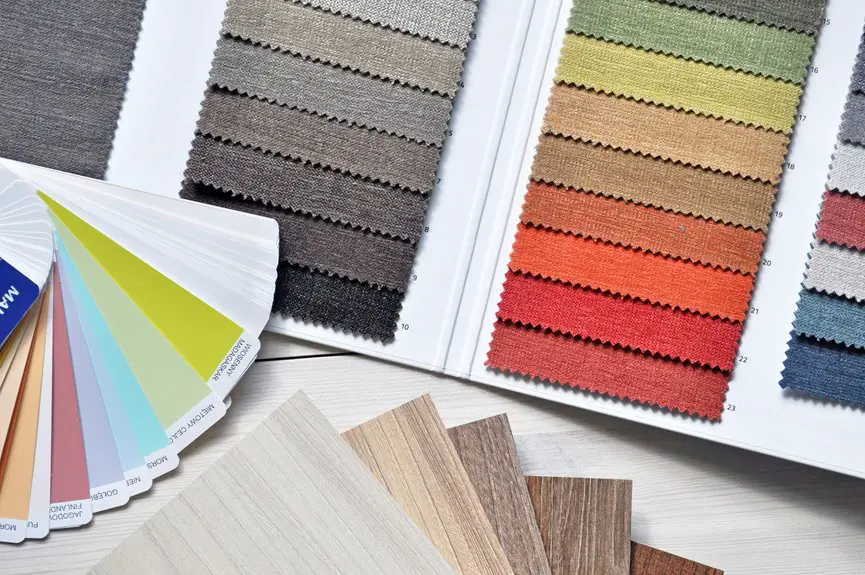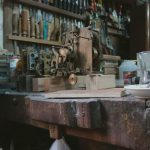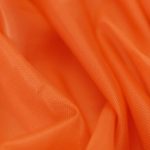You’ll find nonwoven fabrics ideal for disposable textiles because they offer strength, softness, and breathability while keeping costs low. Their quick manufacturing processes use affordable materials and require less energy, making them efficient for mass production. Plus, their absorbency and comfort fit perfectly for medical and hygiene products like masks and diapers. They also support eco-friendly innovations, helping reduce environmental impact. Keep exploring, and you’ll uncover even more reasons why these fabrics are the go-to choice.
Table of Contents
Key Takeaways
- Nonwoven fabrics offer cost-efficient, rapid production suitable for high-volume disposable textile demands.
- Their softness and breathability ensure comfort, essential for single-use medical and hygiene products.
- Strong bonding methods provide durability and tear resistance while maintaining disposability.
- High absorbency and fluid resistance make them ideal for medical gowns, diapers, and wipes.
- Innovations enable biodegradable and eco-friendly options, reducing environmental impact of disposable textiles.
Manufacturing Processes of Nonwoven Fabrics
Although nonwoven fabrics may seem simple, their manufacturing involves several distinct processes that directly affect their properties and applications.
You start by selecting fibers, either natural or synthetic, depending on the desired end use. Then, you can use dry-laid, wet-laid, or spunbond methods to arrange these fibers into a web.
Next, bonding techniques like thermal, chemical, or mechanical bonding hold the fibers together. For example, spunbonding melts and extrudes fibers, creating strong, continuous filaments. Alternatively, you might choose needle punching, where barbed needles entangle fibers mechanically.
Bonding methods like thermal, chemical, and mechanical ensure fibers form durable, functional nonwoven fabrics.
Each process influences strength, softness, and absorbency, which you must consider when designing disposable textiles. By understanding these steps, you can tailor nonwoven fabrics to meet specific needs efficiently and cost-effectively.
Key Properties That Suit Disposable Textiles
When you choose nonwoven fabrics for disposable textiles, you need to focus on properties like strength, softness, and absorbency to confirm they perform well during use.
These qualities ensure comfort and functionality without compromising cost-efficiency. Here are four key properties you should consider:
- Strength – Nonwoven fabrics resist tearing and maintain integrity during handling and use.
- Softness – They provide a gentle touch, which is essential for comfort against the skin.
- Absorbency – Effective moisture management helps keep users dry and comfortable.
- Breathability – Allowing air to pass through prevents overheating and promotes comfort.
Applications in Medical and Hygiene Products
Understanding the key properties of nonwoven fabrics helps you see why they’re widely used in medical and hygiene products. Their strength, softness, and barrier capabilities make them perfect for single-use items designed to protect health and maintain hygiene.
Here’s how nonwoven fabrics apply across different products:
| Product Type | Key Benefit | Common Use |
|---|---|---|
| Surgical Gowns | Fluid resistance | Operating rooms |
| Face Masks | Filtration efficiency | Everyday protection |
| Diapers | Absorbency | Infant and adult care |
| Wipes | Softness & durability | Cleaning and disinfecting |
You rely on these materials daily, often without noticing, as they combine comfort with critical protection in a disposable format.
Environmental Impact and Sustainability Considerations
In considering nonwoven fabrics, you can’t ignore their environmental impact and the growing need for sustainable solutions.
While these fabrics are often single-use, advancements have made them more eco-friendly. You should focus on how manufacturers are minimizing waste and using recyclable or biodegradable materials.
Here are key sustainability considerations:
- Use of renewable raw materials like plant-based fibers reduces dependence on fossil fuels.
- Development of biodegradable nonwovens helps reduce landfill accumulation.
- Energy-efficient production techniques lower carbon footprints during manufacturing.
- Recycling initiatives enable nonwoven waste to be repurposed rather than discarded.
Cost Efficiency and Production Benefits
Three key factors make nonwoven fabrics a cost-effective choice for disposable textiles. First, their production process is faster and requires less energy than traditional textiles. Second, raw materials used in nonwovens are often cheaper and more readily available. Third, manufacturing nonwovens allows for mass production with minimal labor, reducing costs further.
Here’s a quick overview:
| Aspect | Benefit |
|---|---|
| Production Speed | Rapid manufacturing cycles |
| Energy Consumption | Lower energy use |
| Raw Material Costs | Affordable, abundant materials |
| Labor Requirements | Minimal manual intervention |
| Scalability | Easily scaled to demand |
You’ll find that these advantages not only cut expenses but also streamline your supply chain for disposable textile products.
Innovations Driving the Future of Nonwoven Textiles
As nonwoven fabrics continue to evolve, cutting-edge innovations are reshaping their applications and performance.
You’ll find that new technologies make these textiles stronger, more sustainable, and versatile for disposable uses.
Here are four key innovations driving the future of nonwoven textiles:
- Biodegradable fibers – They reduce environmental impact without sacrificing durability.
- Electrospinning techniques – This creates ultra-fine fibers, enhancing filtration and softness.
- Smart textiles integration – Embedding sensors for health monitoring or antimicrobial properties.
- Advanced bonding methods – Improve strength and flexibility while lowering production costs.
Frequently Asked Questions
How Do Nonwoven Fabrics Compare to Woven Fabrics in Comfort?
You’ll find nonwoven fabrics generally softer and more breathable than woven ones, making them comfortable for short-term use. However, woven fabrics offer better durability and flexibility, so comfort depends on your specific needs and application.
Are Nonwoven Fabrics Safe for Sensitive Skin?
You’ll be glad to know 85% of people with sensitive skin tolerate nonwoven fabrics well. They’re designed to be soft and breathable, so you won’t experience irritation or discomfort when using products made from them.
Can Nonwoven Fabrics Be Recycled in Standard Recycling Bins?
You usually can’t recycle nonwoven fabrics in standard bins because they’re made from mixed materials. Check local guidelines, as some facilities accept them separately, but tossing them in regular recycling often isn’t effective or accepted.
What Colors and Patterns Are Available for Nonwoven Fabrics?
You might be surprised by the variety! Nonwoven fabrics come in vibrant colors and diverse patterns, from solids to prints. You can choose bold hues or subtle shades, making your disposable textiles both functional and visually appealing.
How Long Do Disposable Nonwoven Products Typically Last Before Use?
You’ll find disposable nonwoven products usually last from six months to a year before use, depending on storage conditions. Keep them dry and away from direct sunlight to maintain their quality and effectiveness until you need them.
- What Is PET Spunbond Nonwoven Fabric? - July 11, 2025
- How to Test the Quality of a Nonwoven Fabric - July 11, 2025
- The Benefits of Using Nonwoven Wallpaper in Your Home - July 11, 2025







